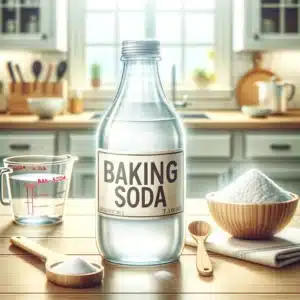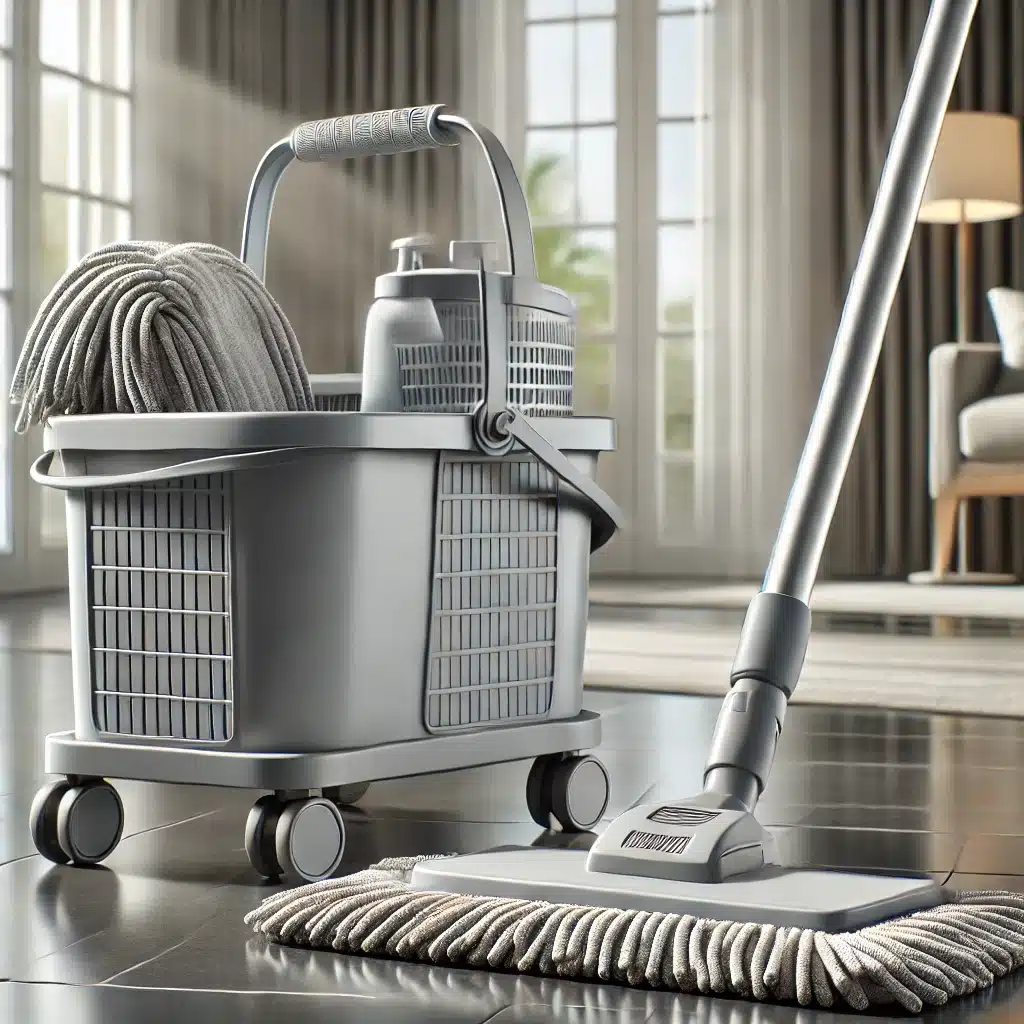When it comes to keeping your kitchen spick and span, sometimes the old routines need a little shaking up. Whether you’re a culinary enthusiast or someone who prefers quick meals, a clean kitchen is a happy kitchen. Below, I’ll share five essential cleaning hacks that will help make your kitchen cleaning efforts more efficient and effective.
1. Steam Clean Your Microwave
To start, find a microwave-safe bowl and fill it with about a cup of water. To enhance the cleaning power and add a pleasant fragrance, add a few slices of lemon, lime, or even orange. If you prefer, a splash of vinegar can be used as an alternative to citrus slices. The acidic properties of both lemon and vinegar are excellent at breaking down grease and neutralizing odors.
Place the bowl in the microwave and set it to high for approximately five minutes. The goal here is to allow the water to boil and create steam that will envelop the inside of the microwave. This steam will cling to the walls and top of the microwave, tackling the grime and loosening any hardened food particles.
Once the microwave stops, don’t open the door immediately. Let the bowl sit for a few more minutes to let the steam continue working. This extra time makes a significant difference, ensuring that even the toughest spots soften enough to be wiped away easily.
Afterwards, carefully remove the hot bowl (be sure to use oven mitts to avoid burns). Take a cloth or sponge and simply wipe down the inside of the microwave. You’ll find that the residues come off effortlessly, and if there are any particularly stubborn spots, a second round of steaming might be necessary—but without the need for aggressive scrubbing.
2. Deodorize the Garbage Disposal with Citrus Peels
One common source of unpleasant odors in the kitchen is the garbage disposal. Given its crucial role in kitchen hygiene and waste management, keeping it fresh is essential. A natural and effective way to maintain a pleasant scent in your kitchen is by using citrus peels in your garbage disposal.
Citrus peels, such as those from lemons, limes, oranges, or grapefruits, contain natural oils that are not only fragrant but also have antibacterial properties. These oils help combat the bacteria that can cause bad smells. Using these peels is a smart and eco-friendly method to refresh your disposal.
To implement this hack, simply save the peels from any citrus fruits you consume. Instead of tossing these peels into the trash or compost, place them directly into the garbage disposal. Run cold water from the tap (cold water helps solidify any grease inside so it can be chopped up more effectively), turn on the disposal, and let it run for about 30 to 60 seconds.
The grinding action of the disposal will release the citrus oils, effectively coating the blades and the inner workings of the disposal unit. This not only clears out lingering food residues that might be stuck and causing odors but also leaves behind a pleasant, citrusy scent that can help deodorize your entire kitchen.
In addition to their deodorizing properties, citrus peels can also serve as a gentle abrasive. They help clean the grinding elements in the disposal, ensuring it operates more efficiently. Over time, this can extend the life of your disposal unit by preventing build-up and ensuring it runs smoothly.

3. DIY All-Purpose Kitchen Cleaner
Creating your own all-purpose kitchen cleaner is not only economical but also environmentally friendly. This simple DIY project can lead to a powerful cleaning agent capable of tackling the toughest grease and grime in your kitchen. The core ingredients—water, vinegar, and essential oils—are typically staples in many households, making this cleaner easy to whip up on a whim.
You’ll need a clean spray bottle, which will serve as the container for your homemade solution. Vinegar, the main cleaning component, is known for its natural disinfectant properties. When diluted with water, it becomes a gentle yet effective cleaner suitable for a variety of surfaces in your kitchen, from countertops to appliances.
For every part of vinegar, use an equal part of water to balance the acidity, ensuring it’s tough on stains but not harsh on your surfaces. The addition of a few drops of essential oil not only masks the sharp scent of vinegar but also adds a therapeutic aroma to your kitchen space. Lemon essential oil is particularly popular for its fresh, invigorating scent and additional grease-cutting properties. Alternatively, lavender can be used for a calming and soothing fragrance, which makes cleaning a more pleasant experience.
Mix these ingredients directly in the spray bottle for ease of use. Shake well to ensure the vinegar and oils are thoroughly combined. This mixture is now ready to be used just like any other commercial kitchen cleaner but without the harsh chemicals and additives. Simply spray it onto any kitchen surface such as countertops, stovetops, and even the exterior of appliances. Wipe with a clean cloth or sponge to remove everyday dirt, food particles, and oily residues.
4. Quickly Clean Stainless Steel Appliances
Stainless steel appliances add a sleek and modern touch to any kitchen, but they are also notorious for showing every fingerprint and smudge. Keeping them clean and shiny doesn’t have to be a chore with the right approach. A simple homemade solution and a couple of common household items can keep your appliances looking their best.
Create a cleaning solution of vinegar and water. The acetic acid in vinegar makes it an effective natural cleaner that can cut through grease and lift away fingerprints without the need for harsh chemicals. Mix equal parts of vinegar and water in a spray bottle for easy application. This blend is gentle enough to use on stainless steel without damaging the finish.
To clean your appliances, lightly mist the vinegar solution over the surface of your stainless steel. Then, take a microfiber cloth, which is soft and non-abrasive, and wipe down the appliances. The microfiber is effective at trapping dirt and oil, as well as buffing the surface without leaving streaks or scratches.
For an extra shine, especially if you’re dealing with stubborn smudges or if you want to give your appliances a glossy look, olive oil is an excellent choice. Place a few drops of olive oil onto a paper towel and gently rub it into the stainless steel surface. This will not only polish the steel but also lay down a thin layer of oil that helps repel future fingerprints and dust, keeping your appliances cleaner for longer.
5. Utilize Baking Soda for Tough Stains
Baking soda is a powerhouse in the realm of home cleaning, especially in the kitchen where stains can be stubborn and plentiful. Whether it’s a spilt cup of coffee on the countertop or a hard-to-remove sauce stain on the kitchen table, baking soda offers a gentle yet effective cleaning solution.
To tackle tough stains, start by making a paste. Mix three parts baking soda with one part water to create a thick, spreadable paste. This ratio ensures that the paste is substantial enough to stick to vertical surfaces if necessary, making it versatile for all areas of your kitchen.
Apply this paste directly onto the stain on your countertop or kitchen table. The natural abrasiveness of baking soda works to lift stains without scratching the surface, which is particularly important for delicate materials like marble or polished wood. Let the paste sit on the stain for about 15-20 minutes. During this time, the baking soda will penetrate the stain, breaking down the molecular bonds that make it so difficult to remove.
After the time has elapsed, take a soft brush or cloth and gently scrub the area. The slight abrasiveness of the baking soda acts like a mild sandpaper, targeting just the stain without damaging the finish of your countertop or table. For tougher stains, a second application may be necessary, but often, a single treatment is sufficient.

Kitchen Cleaned as Never!
Implementing these simple yet effective kitchen cleaning hacks can save you time and make your kitchen a cleaner, more inviting space. Don’t let the dread of cleaning keep you out of your kitchen. Try these tips and see just how easy maintaining a pristine kitchen can be! These methods not only enhance cleanliness but also help in creating a welcoming atmosphere where you can enjoy cooking and dining without the burden of messes and clutter.
However, sometimes, despite your best efforts, deeper grime and persistent issues may require more than a DIY approach. When home remedies aren’t enough to tackle the tougher challenges, it’s worth considering professional help. This is where a dedicated service like Cleaning Hive steps in. With their expertise in comprehensive kitchen cleaning, they can manage everything from degreasing hard-to-reach spots to sanitizing surfaces, ensuring your kitchen is not just clean but hygienic too.
To truly keep your kitchen—the heart of your home—in top condition, check out Cleaning Hive’s range of services. They offer tailored cleaning solutions that cater specifically to your needs, ensuring that your space is comfortable, clean, and ready for your next culinary adventure.




